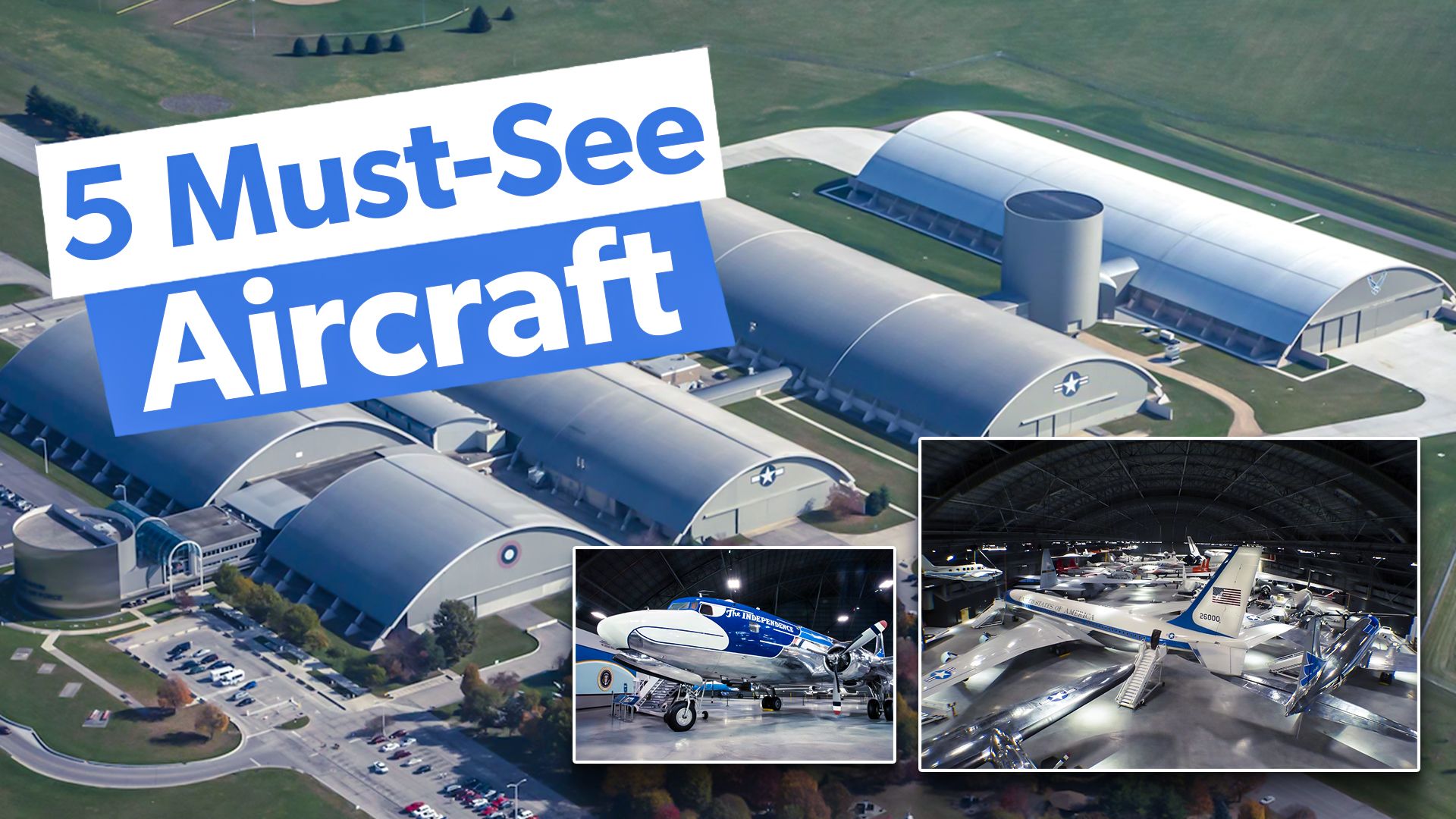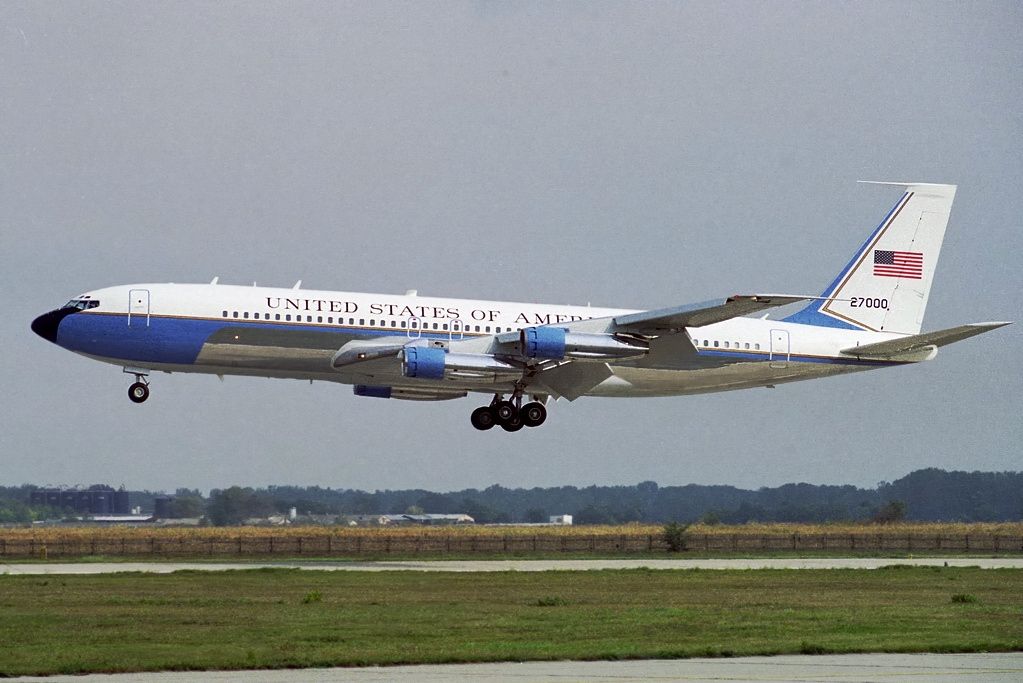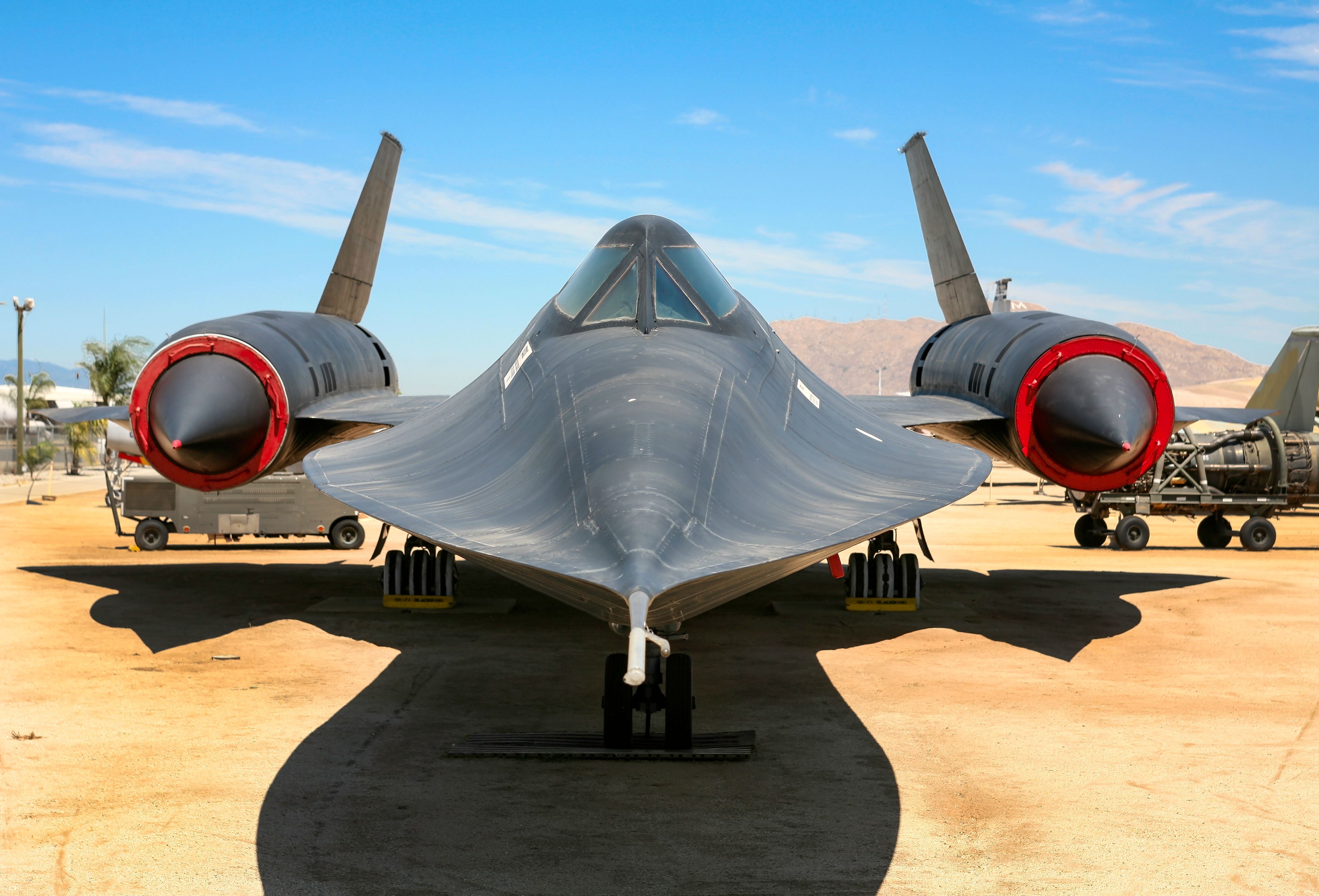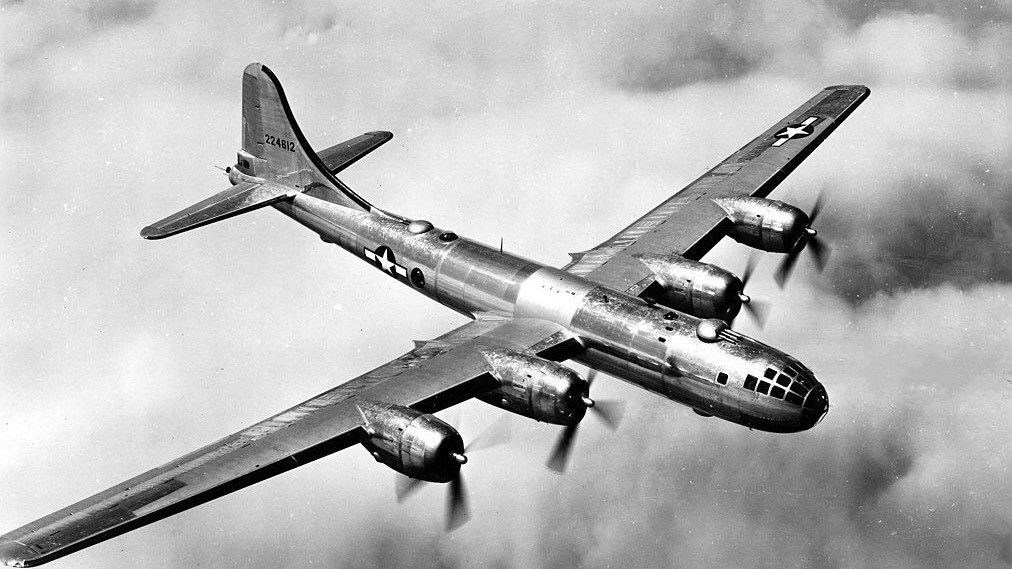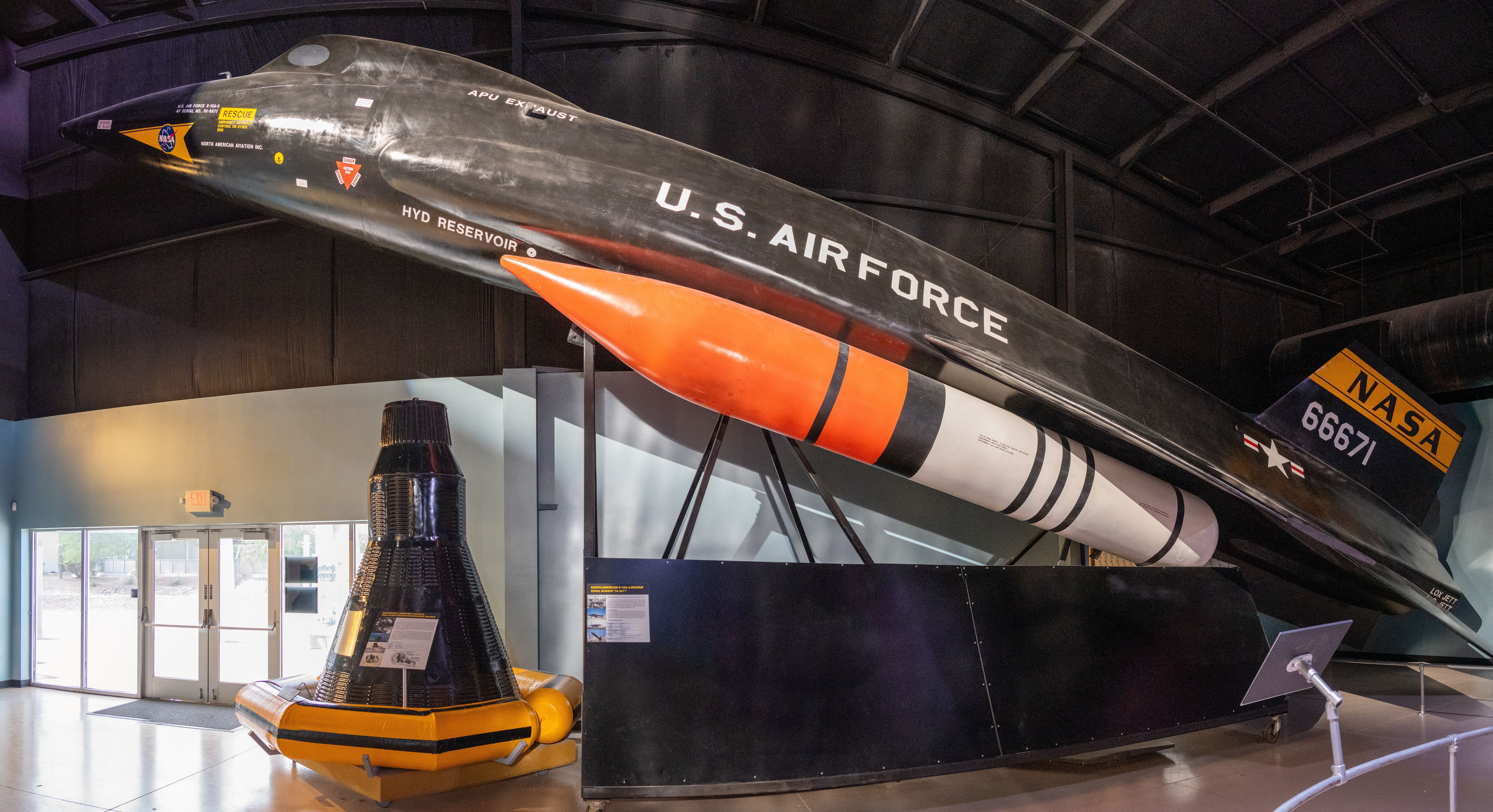Summary
- The Boeing VC-137C “SAM 26000” housed in the museum transported presidents and officials.
- The SR-71 Blackbird holds records for speed and altitude but was retired due to cost.
- The North American X-15, a pioneering space plane, is displayed at the museum.
The National Museum of the US Air Force is a treasure trove of some of the most marvelous aircraft ever made. Whether it be historical aircraft from the World Wars, experimental aircraft created during the Cold War, or vehicles for space research, the museum houses many mechanical birds prized by aviation lovers around the world. But which are the top five aircraft in the museum that you shouldn’t miss out on? Let’s find out.
5
Boeing VC-137C “SAM 26000 ”
The aircraft carried John F. Kennedy’s body from Dallas to Washington after the president had been assassinated.
The National Museum of the United States Air Force houses The William E. Boeing Presidential Gallery. The gallery is home to a historic collection of presidential aircraft. Visitors can walk through four of them, including aircraft used by:
- Franklin D. Roosevelt,
- Harry S. Truman
- Dwight D. Eisenhower
The most popular presidential aircraft is the Boeing VC-137C, which is also known as SAM (Special Air Mission) 26000. Kennedy, Johnson, Nixon, Ford, Carter, Reagan, George H.W. Bush, and Clinton used this aircraft. In addition to the presidents of the US, the aircraft also carried heads of state, diplomats, and other officials.
SAM was flown to the National Museum of the US Air Force in May 1998. During its final flight, the aircraft circled the museum at low altitudes before landing at Wright Field. After months of restoration work, the aircraft was placed on permanent display in the museum’s Presidential Hangar.
4
SR-71 Blackbird
The black epoxy paint of the SR-71 made detecting the aircraft difficult; it was the first stealth aircraft.
The Lockheed SR 71 Blackbird holds the curious distinction of being an aircraft that was retired twice. The US Air Force first retired the model in 1989 before it was brought back to be used for research purposes by NASA in the 1990s.
LA Times reported the reasons for retirement as follows:
“ In congressional testimony, Air Force Chief of Staff Gen. Larry D. Welch identified the increased survivability of reconnaissance satellites, SR-71 vulnerability to the Soviet SAM-5 surface-to-air missile and the cost of maintaining the SR-71 fleet. The cost factor is the most significant to the Air Force because it limits expenditures in other areas.
“Reagan Administration Air Force Secretary Edward C. Aldridge Jr. estimated that the money used to operate the SR-71 fleet could operate and maintain two tactical fighter wings.”
Photo: PJSAero | Shutterstock
SR 71 was designed to cruise at speeds greater than 3 times the speed of sound. The aircraft held many records, including:
- Top “speed over a recognized course” as it flew from New York to London, covering a distance of 3,461.53 miles (5,570.79 km) in less than 2 hours.
- An “absolute altitude record” of 85,069 feet (25,929 m) in a sustained flight.
In the book SR-71 Revealed : The Untold Story, the writer Richard Graham quoted John Glen, who thought that the aircraft shouldn’t have been retired:
“Mr. President, the termination of the SR-71 was a grave mistake and could place our nation at a serious disadvantage in the event of a future crisis. Yesterday’s historic transcontinental flight was a sad memorial to our short-sighted policy in strategic aerial reconnaissance.”
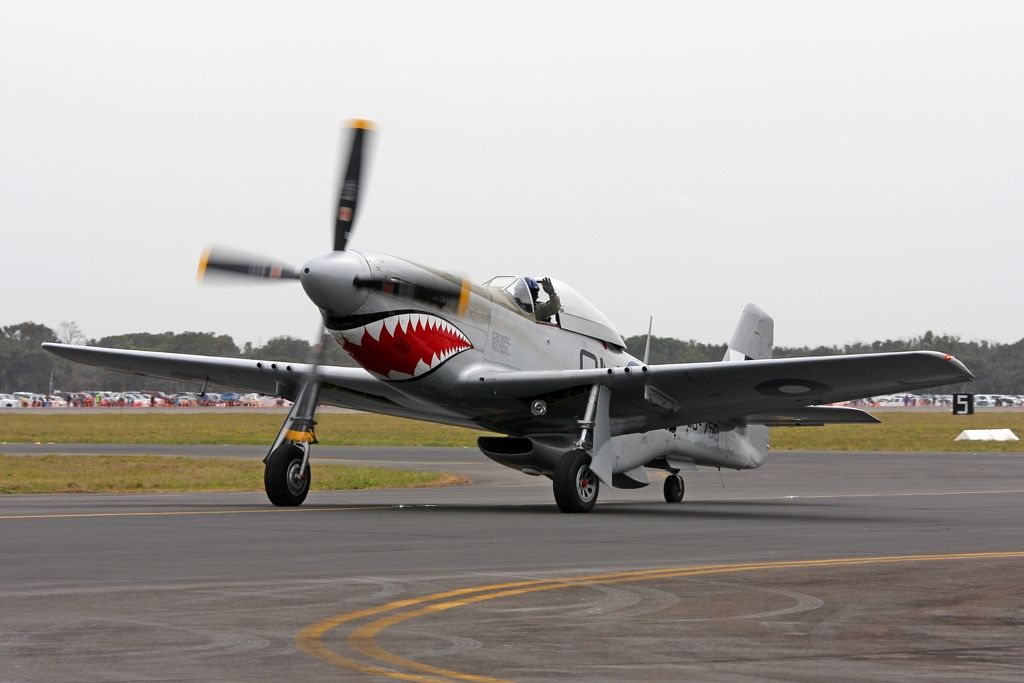
Related
The Top 5 US Air Force Aircraft Of The 2nd World War
Most of these aircraft became the primary combat aircraft for global air forces during World War II.
3
Boeing B-29 Superfortress
The Boeing B-29 Superfortress hauled the Fat Man and Little Boy – the two atomic bombs that quelled World War II.
The Boeing B-29 Superfortress first flew in 1942 and was used primarily by the US Army Air Forces, US Air Force, and Royal Air Force. In addition to carrying the bombs that were eventually dropped on Hiroshima and Nagasaki, the B-29 also carried general bombs and firebombs.
General Hap Arnold, the leader of the US Army Air Corps, exemplified the unique capability of the B-29 Superfortress:
“Before we got the Marianas, the columnists, commentators, and newspaper reporters had all talked about the Naval capture of the Islands. The Navy would take the Islands and use them as a base. No one had mentioned using them as bases for the B-29s, yet it was the B-29s and the B-29s only that could put tons and tons of bombs on Japan. The fleet couldn’t do it, and the Naval air couldn’t do it; the Army couldn’t do it. The B-29s could.”
Photo: US Air Force
Some specifications of the B-29 Superfortress
| Length | 99 ft 0 in (30.18 m) |
| Wingspan | 141 ft 3 in (43.05 m) |
| Max takeoff weight | 133,500 lb (60,555 kg) |
| Service ceiling | 31,850 ft (9,710 m) |
| Propellers | 4-bladed constant-speed fully-feathering propellers |
Three B-29s that were modified to drop atomic bombs survive to this day. One of them is the B-29 ‘Bockscar’ that dropped Fat Man on Nagasaki. This aircraft is located at the Wright-Patterson AFB in the National Museum of the United States Air Force.
2
Avro Canada VZ-9AV Avrocar
The Avro Canada VZ-9AV Avrocar was a secret mission VTOL aircraft developed in the early years of the Cold War
Despite an investment of $7.5 million, the Avro Canada VZ-9AV Avrocar only ever flew around three feet off the ground. Just two units of the aircraft were ever made.
The first Avrocar rolled out in 1958, and after three years of experimentation, the realization came that the aircraft was practically impossible to operate. The first prototype of the Avro Canada VZ-9AV came to the National Museum of the US Air Force in 2007.
The aircraft could accommodate two crew members, and had space for only a single observer/engineer. Each of its three Continental J69-T-9 turbojet engines were capable of producing a thrust of 660 lb (2.9 kN).
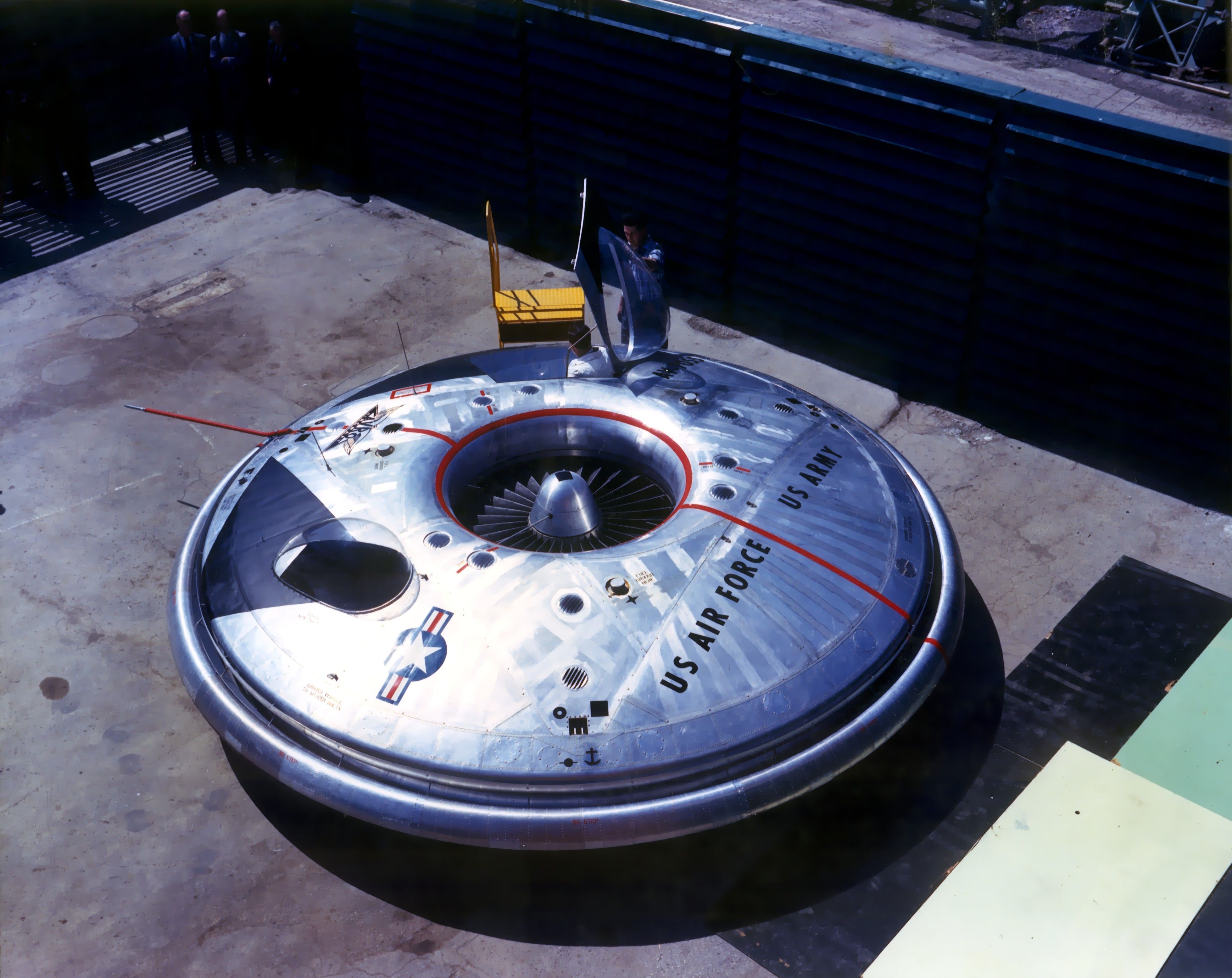
Related
The Story Of Avro Canada’s VZ-9 Avrocar Flying Saucer Project
How in the 1950s we came close to building a flying saucer that was secretly being built by the Nazis.
Specifications of the Avro Canada VZ-9AV Avrocar
| Height | 3 ft 6 inches (1.07 m) |
| Empty weight: | 3,000 lb (1,361 kg) |
| Max takeoff weight | 5,560 lb (2,522 kg) |
| Maximum speed | Estimate: 300 mph (480 km/h, 260 kn): Actual: 35 mph (56 km/h) |
| Range | Estimated: 995 mi (1,601 km); Actual: 79 mi (127 km) (actual) |
About the lack of feasibility of the aircraft, the National Museum of the US Air Force states:
“Tests with scale models at Wright-Patterson AFB, Ohio, indicated that the cushion of air under the Avrocar would become unstable just a few feet off the ground. The aircraft would be incapable of reaching supersonic speeds, but the testing went ahead to determine if a suitable aircraft could be developed for the Army.
“The first prototype — the Avrocar on display (serial number 58-7055) — was sent to the National Aeronautics and Space Administration (NASA) Ames Research Center at Moffett Field, Calif. There, wind tunnel tests proved that the aircraft had insufficient control for high speed flight and was aerodynamically unstable.”
1
North American X-15
The North American X-15 crossed the edge of outer space in the 1960s. The second North American X-15 made was retired to the National Museum Of The US Air Force in 1969.
Only three units of the North American X-15s were ever made. 8 of the 12 pilots who flew the X-15 crossed the boundary of space, qualifying the pilots as “astronauts”. According to NASA:
“[the X-15] provided a major technological stepping-stone to space.. the X-15 demonstrated for the first time that pilots could fly rocket-powered aircraft out of earth’s atmosphere, control them successfully in an airless environment, reenter the atmosphere and perform a precision landing at a predetermined site.”
Photo: Joseph Creamer | Shutterstock
Specifications of the North American X-15
| Height | 13 ft 1 in (3.99 m) |
| Empty weight: | 14,600 lb (6,622 kg) |
| Max takeoff weight | 5,560 lb (2,522 kg) |
| Maximum speed | 4,520 mph (7,270 km/h, 3,930 kn) |
| Range | 280 mi (450 km, 240 nmi) |
| Service ceiling | 354,330 ft (108,000 m) |
| Rate of climb: | 60,000 ft/min (300 m/s) |
The aircraft retired to the National Museum of the US Air Force is the second of the three X-15s ever made. Reaching a Mach speed of 6.7, this was the fastest aircraft of the X-15 series.

